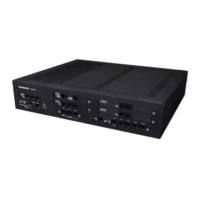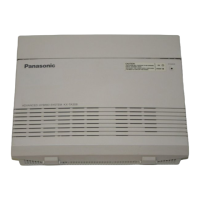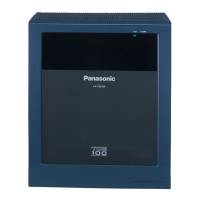[Example ISDN Network Port Setting]
PBX-1
Network ID 1
PBX-2
Network ID 0
4001
Idle Busy
OFF
OFF
ON
ON
ONOFF
OFFOFF
ON
4001
Busy
4001
Busy
4001
Busy
PBX-3
PBX-5
PBX-4
Network ID 3
Idle
4001 NDSS
Busy
IP-Gateway-QSIG
IP data is routed through the network according to the routing tables of the
V-IPGW/IP-GW
cards. When
using
VoIP,
it is necessary to identify the monitor PBXs, to which to transmit extension status information,
for each card that will be used. This is done by specifying the extension number of any extension (for
example, the PBX operator) at the monitor PBX as a Network Operator extension for that V-IPGW/IP-GW
card.
[Example VoIP Network]
PBX-1
Network
ID 1
PBX-3
PBX-2
PBX-4
V-IPGW
IP Network
Idle
4001 NDSS
Busy
4001
Idle Busy
Network
ID 2
Idle
4001 NDSS
Busy
Mixed Network
When using the NDSS
feature over a mixed network containing both VoIP portions and ISDN line portions,
it is possible to set whether status information will be transferred between VoIP and ISDN cards within
each PBX. For example, if the monitor PBX is on a VoIP network, and monitored PBXs are on an ISDN
network, the PBX that acts as a gateway between the VoIP and ISDN networks must have this setting
enabled for ISDN to VoIP.
4. Network Monitor Extension Registration [Monitor PBX]
266 Feature Manual Document Version 2013-05
13.1.17 Private Network Features—NDSS (Network Direct Station Selection)

